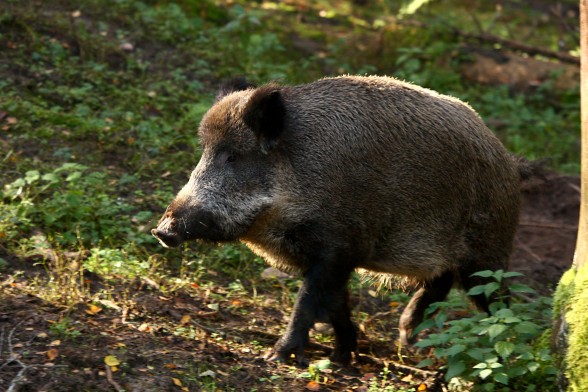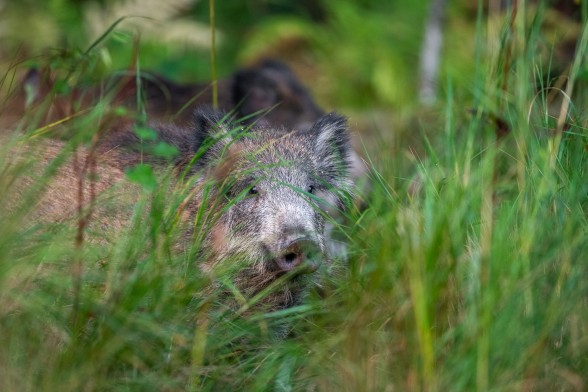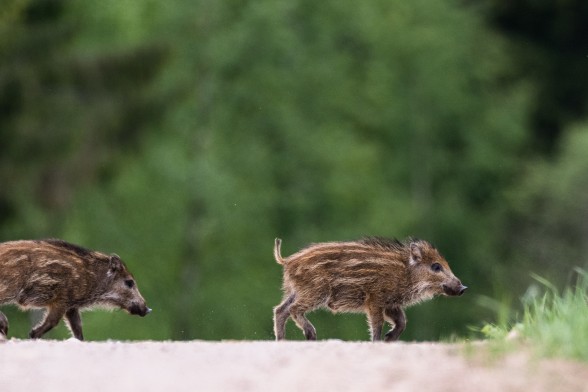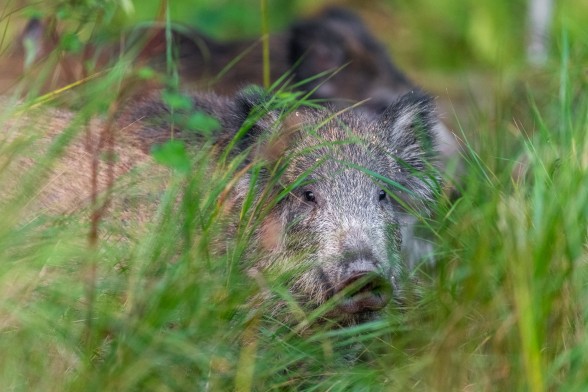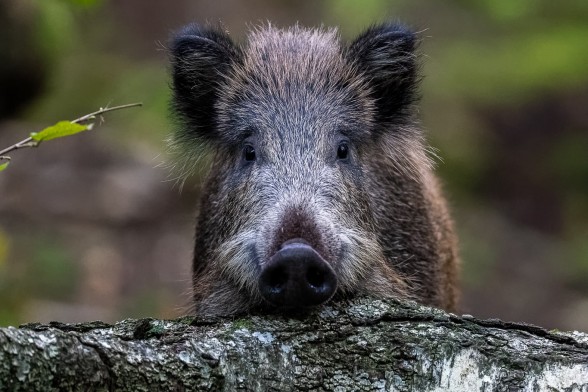
Wild boar
Diet
Forest pigs are omnivores and eat almost anything they can find, but 90% of their food is plant-based. They forage for food by digging in the soil. In reedbeds, wild boars search for reed roots, limiting the overgrowth of water. In general, they feed on grass, acorns, nuts, seeds, berries, roots, tubers, insects, earthworms, molluscs, small reptiles, birds and their eggs, wounded animals, carrion and garbage. All crops are palatable: maize grains, peas, oats, wheat, potatoes, also grass of the Leguminosae family and cruciferous vegetables. Cannibalism is observed under heavy feeding conditions.
Occasionally, wild boars prey on young fawns.
Habitat
Wild boars can be found in forests, scrub, reeds, fields, meadows. Recently, wandering and foraging, they do not shy away from wandering even into human environments, including large cities.
Important and interesting facts
In Latvia, the male wild boar weighs about 250 kg, females – 150 kg.
The wild boar has strongly developed, three-sided canine teeth or tusks that grow throughout its life. The tusks serve both as a defensive weapon and as a working tool when digging up the ground. In areas inhabited by wild boars, there are always mud baths and trees to rub along.
The wild boar has poor eyesight, but a very well-developed sense of hearing and smell. It can smell insect larvae in soil up to 10 cm deep, and can smell humans up to 500 paces away in warm, windless weather. In dangerous situations, it can not only pretend to be dead, but can also hide in hard-to-reach places. Wild boars have good memory and can remember places where they have sensed a threat.
Information sources: latvijasdaba.lv, Wikipedia
Photo: Māris Kreicbergs
